What a day. My first day in Scotland began with the usual bit of anxiety - driving on the wrong side (for me) of the road! I picked up my rental in Edinburgh - some Chinese brand I had never heard of before - and had my trusted friend Google Maps guide me north into the Highlands where I was to meet SCOTLAND: The Big Picture’s Head of Rewilding, Peter Cairns.
From the moment I had first heard of rewilding, Peter had been one of those leading and inspirational figures for me, just like Rewilding Europe’s Frans Schepers, Tompkins Conservation’s Kris Tompkins, and Trees for Life’s Alan Watson Featherstone. And so I probably felt like George Monbiot when he went for a hike with Alan (as recounted in Feral).
First day in Scotland, and there I drive, from the highway to roads growing ever slimmer. I eventually leave the last village behind, drive through woodland on a road too narrow for oncoming traffic to pass. Then that road decides to go unpaved and finally decidedly bumpy … and then I was there, Ballintean.
Ballintean, once a farm on the banks of the River Feshie, is not just the family home, it’s been SCOTLAND: The Big Picture’s base since the charity’s inception. Go here to learn more about rewilding training in the Cairngorms.
It’s a perfect spot for nature-based tourism and training, with its cottage and lodge and its one hundred and twenty acres of rewilded land. Ballintean is part of the Northwoods Rewilding Network and also sits on the edge of Cairngorms Connect, Britain’s biggest habitat restoration initiative - six hundred square kilometers of forest, river and mountain. Everything I got to experience on my walk with Peter, was nowhere to be seen thirty years ago. Here’s how Ballintean - as we know it today - began. In Peter’s words:
“With a gleaming property brochure in my hand and apprehension running riot in my stomach, I drove up the windy, wooded glen shadowed by towering Scots pines. When the trees petered out, a littered farmyard revealed itself complete with dilapidated caravans and an eclectic mix of rusty machinery. I had no idea what I’d expected, but this wasn’t it. An hour or so later, I thanked the farmer for showing me around but told him: “It’s too big, too much money and too much work.” I was glad to drive away. It was the summer of 1994 and by that autumn, somehow, my wife and I, our five-month old baby and two boisterous dogs had moved in.” (read the whole Ballintean story here)
The man was in a band, then created a truck business for concert tours, then fell into wildlife photography (see some of his amazing images below), traveled the globe to capture iconic imagery, then conservation storytelling more and more came into focus, with projects like Tooth & Claw, Wild Wonders of Europe and 2020VISION (then called the most ambitious photography-based conservation initiative ever staged in the UK) … and in all of it nature and nature-passionate people took more and more of a center stage until the formation of SCOTLAND: The Big Picture was - with hindsight - an inevitability.






Peter will be the first to say that none of it was planned. I’m a great believer in that way of embracing life. It requires an open mind, flexibility and courage - and it invariably leads to a colorful, many-faceted time on Earth. Peter’s life is testament to that.
So there I was, didn’t even get the chance to ring the door bell - he had already spotted my from the window and waved for me to come in. When I did, I wasn’t greeted by him, but by the friendliest Labrador you’ll ever meet. The dog left no doubt that he loved and wanted some cuddly attention - and he got it, of course, while Peter and I enjoyed a cup of tea and started talking rewilding.
This conversation, as we walked the land, went everywhere - but always with nature recovery in mind. We talked past and present, future scenarios, politics, leadership, philosophy, storytelling, courage, photography and documentaries, language, philanthropists, entrenched and open minds. And we talked capercaillie, deer, pine marten, lynx, sheep, the plans for the Tauros … ah, yes, and then there were Peter’s Highland cattle!
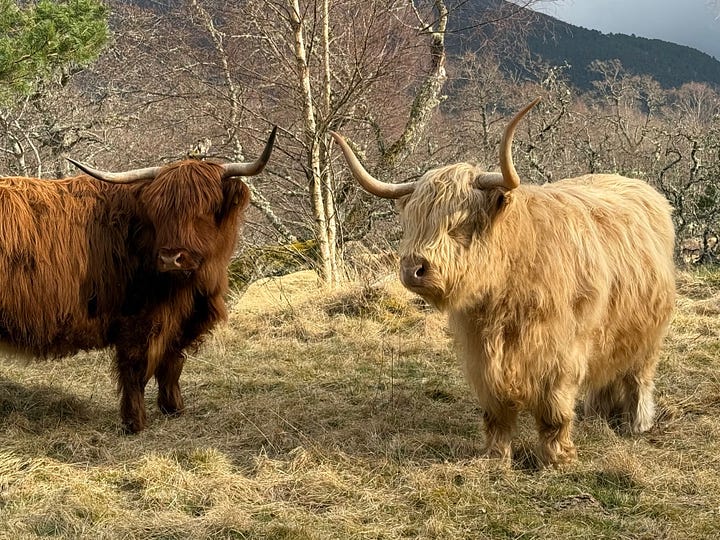

He said that they had a few, free-roaming, of course, to do what large herbivores do so well in their roles as ecosystem engineers. Peter mentioned that we’d likely see them somewhere during our walk. And at some point I did spot one of them up on a ridge … alas, it turned out that those sneaky herbivores had not only discovered that the grass was greener on the other side, but they had actually found a way to circumvent the fence and get onto the neighbor’s land! With a bit of food and cajoling we finally coaxed those marvelous creatures back onto Ballintean land.
Talking about that land … when you walk it, you clearly see it, you see the rewilding efforts (and those are often efforts of non-action) with fallen trees left where they’ve fallen. The land feels real, feels richly layered - not manicured, not neat, but actually natural. It’s not rare that people - even nature-savvy people - ask Peter why he doesn’t remove this or fixes that. The reason for such questions is, of course, that we’ve all been conditioned to do things orderly, properly, neatly. And so our first impulse will often be to want to fix nature - instead of letting nature lead.
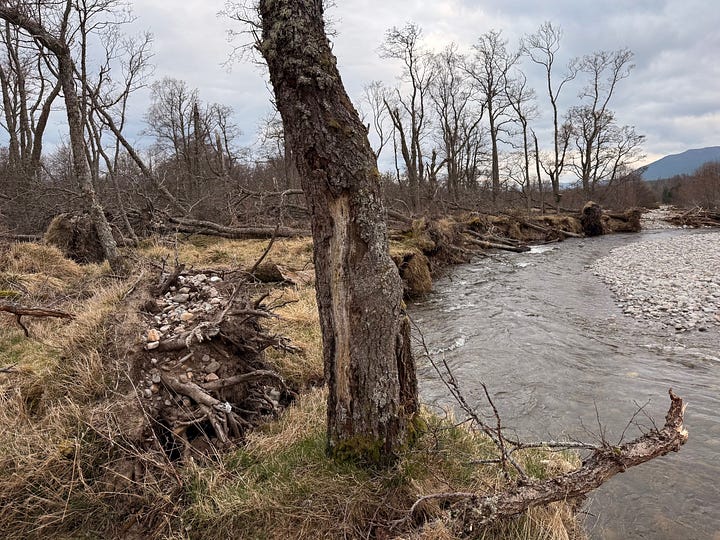
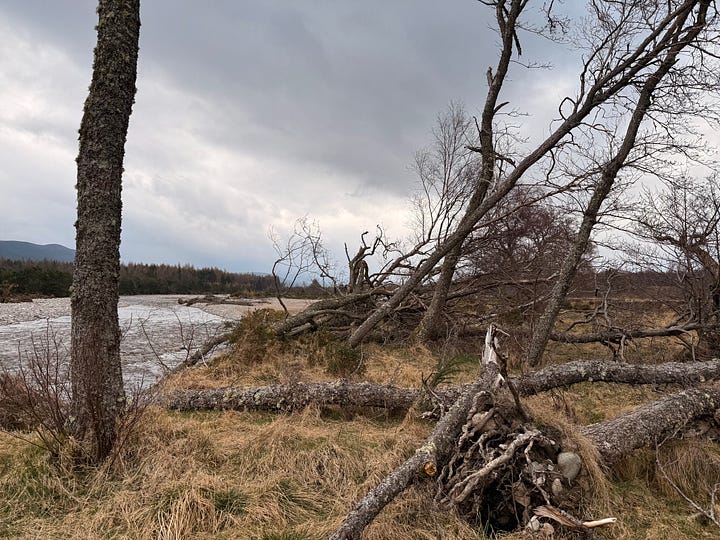
Peter’s impact for nature recovery efforts has been staggering. When he and his colleagues began on Scotland’s rewilding journey, rewilding wasn’t even niche, it was practically unheard of. Today the movement is firmly in the mainstream, with increasing levels of understanding and buy-in. Younger generations particularly are inspired by rewilding projects and are eager to get their hands dirty to bring about a biodiversity-rich, healthy and sustainable future for all of Scotland.
While the big stuff is essential for scaling the movement and nature recovery efforts everywhere, I often think we can best feel the impact we have on an individual level. Peter’s certainly been an inspiration for me - and when he takes people for walks, pointing at the shifting river bank, or a cluster of dead trees, explaining the idea of letting nature lead and then seeing realization of what that entails in his visitors’ eyes … that’s impact. Every opened mind invariably ripples outward with new insight and fresh passion. There’s no doubt on my mind that Peter has inspired, in such personal ways, many thousands of people from across generations over the course of the past decades.
As people get older, they often become more set, more inflexible, in their ways. Turns out that Peter and I are the same age - but flexibility clearly remains a strong suit. As we walked, I realized that he’s one of those people who enjoys walking fast - I’m not one of those. I love taking my time, I love meandering and moseying. But there, too, Peter was kind enough to adjust his pace. It seems like a small thing, but it isn’t. Remember the aforementioned “open mind, flexibility and courage”? Peter exemplifies that way of living and I have no doubt that, when life throws new adventurous his way, he’ll jump at them!
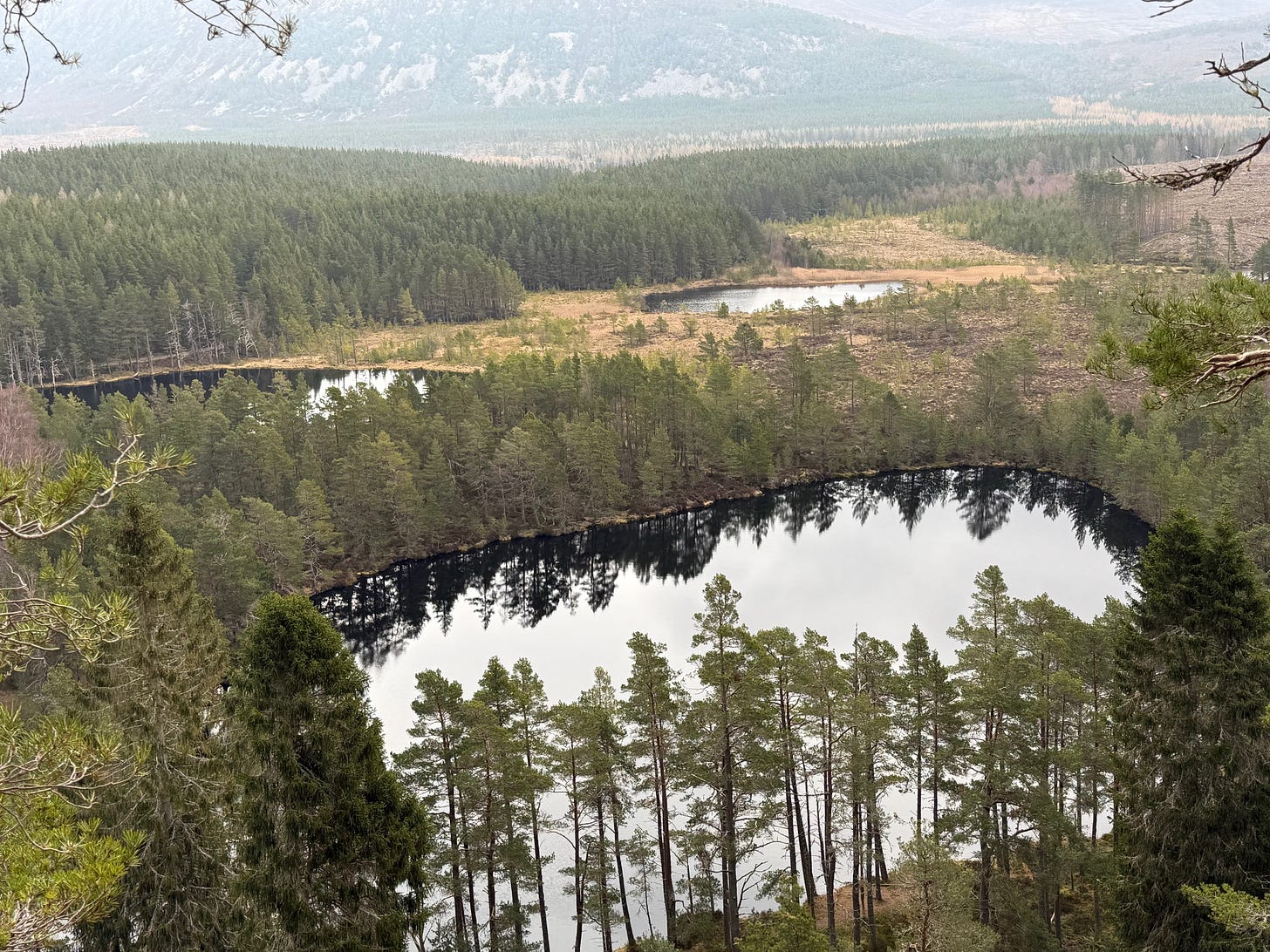
PS: The final walk, in between those four small lakes and up to the viewpoint, was also a time talking about the importance - for both mental and physical health - of being in nature. The serenity and peace that comes with it is known to everyone who regularly does it - come to think of it, I just wrote about that. But that final walk also showed razed forests, tree plantations, neat foot paths … a landscape that, beautiful as may appear to our eyes, is nowhere near as natural as people might think it is.
Most profoundly for me, as I was looking up steep and mossy and thickly forested slopes, I couldn’t help but think that a) this land would be perfect for the lynx and b) that this land needs the lynx. And just imagine how much more immersive and inspiring that walk becomes when you know that you get to share your time in nature with that awesome creature.
Cheers,
If you enjoy the Rewilder Weekly …
… consider supporting my work. Your paid subscription will help generate the funds needed to realize a unique rewilding book I’m working on. And, of course, that paid subscription also ensures that the Rewilder Weekly will always keep going for those who cannot afford to pay. A thousand thanks!


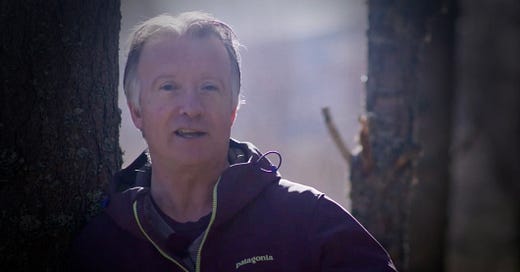




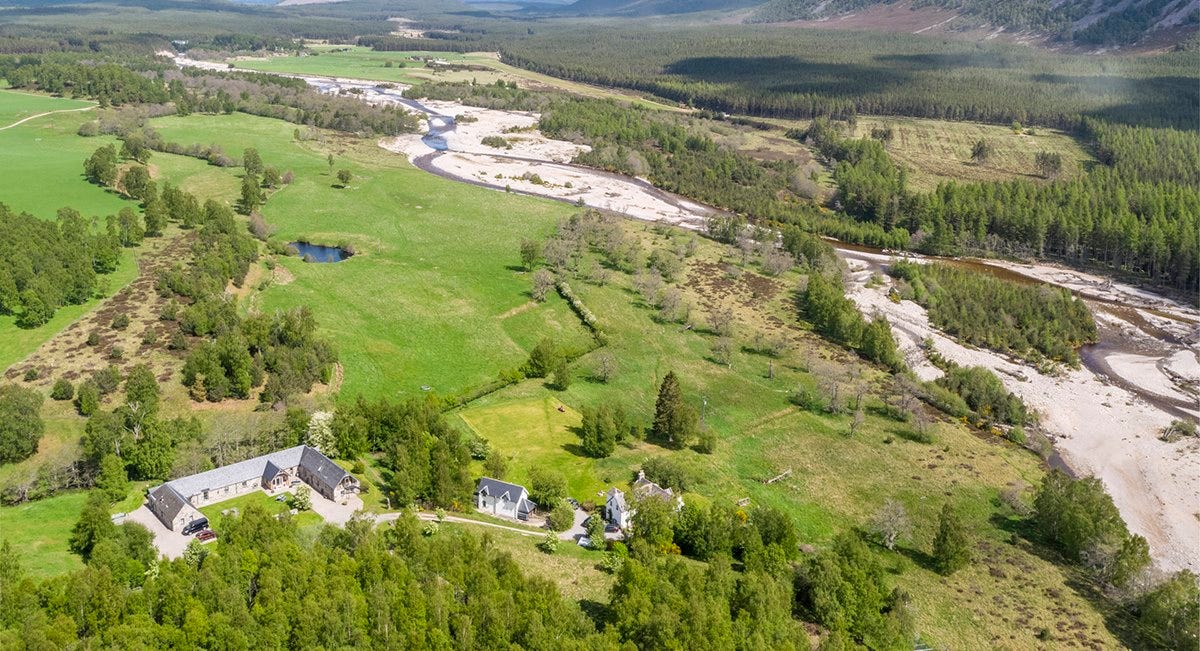


Many thanks for sharing. What large mammals do they have there in addition to the cattle?